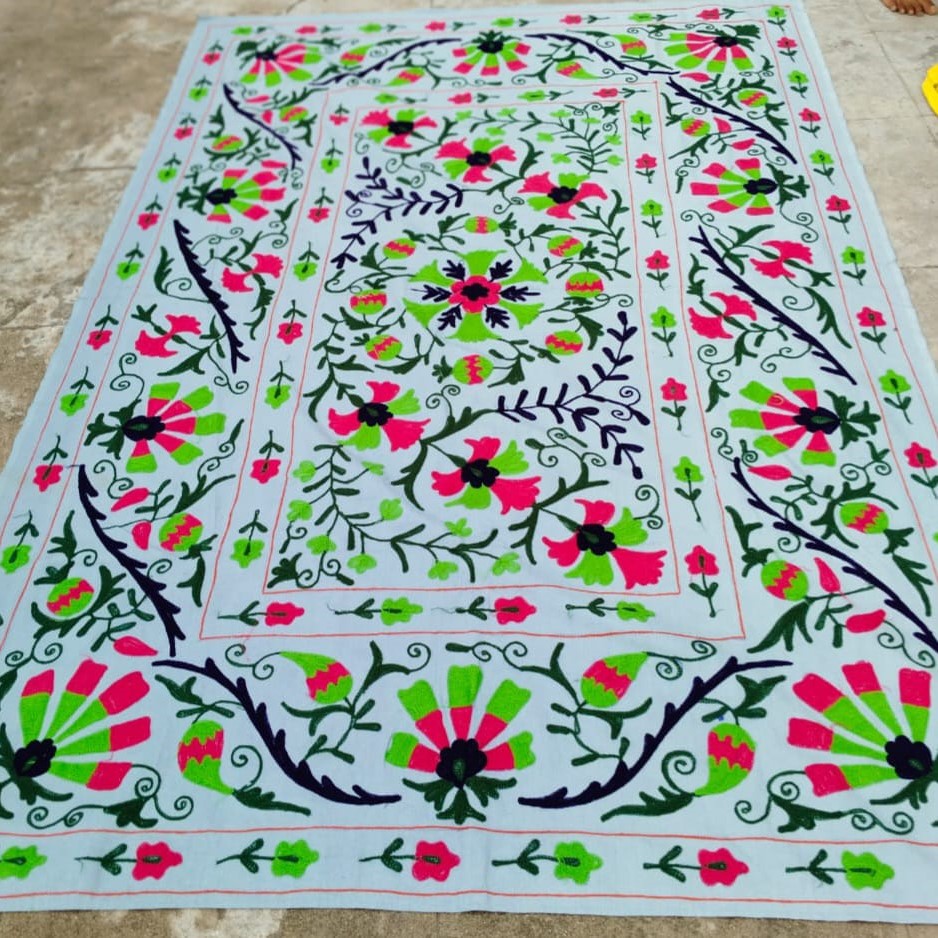Indian looms represent a rich tradition of textile production, deeply embedded in the country’s cultural heritage. These handlooms are characterized by their diversity, craftsmanship, and sustainability.
Characteristics of Indian Handlooms
- Manual Process: Handlooms involve weaving fabric manually on a loom without the use of electricity, making it an eco-friendly process.
-
Natural Fibers: Typically, handloom textiles are made from natural fibers such as cotton, silk, wool, and jute. These materials are often locally sourced, contributing to sustainability.
- Artisanal Craftsmanship: Each region in India has its unique weaving techniques and designs, passed down through generations. This results in a wide variety of textiles, each with distinct patterns, motifs, and textures.
- Natural Dyes: Traditional loom weaving often employs natural dyes derived from plants, minerals, and other organic sources, reducing the environmental impact of the dyeing process. Benefits of Indian Handlooms:
- Sustainability: The use of natural fibers and dyes, along with manual weaving processes, makes handloom textiles environmentally friendly.
- Cultural Heritage: Handlooms preserve traditional weaving techniques and motifs, keeping cultural heritage alive.
- Economic Empowerment: Handlooms provide livelihoods to millions of artisans, especially in rural areas, supporting local economies.
- Unique and High-Quality Products: Handloom textiles are often of superior quality and unique, catering to niche markets that value craftsmanship and heritage.
Indian looms offer various sustainable alternatives due to their traditional methods and eco-friendly practices. Here are some options:
1. Handloom Weaving
Handloom weaving is inherently sustainable, relying on manual labor without the need for electricity. It reduces the carbon footprint and supports local artisans.
- Key Features:
- Uses natural fibers like cotton, silk, and wool.
- Employs traditional dyeing techniques using natural dyes.
- Produces durable and high-quality textiles.
2. Khadi
Khadi is a hand-spun and hand-woven fabric, historically promoted by Mahatma Gandhi as part of the Indian independence movement. It remains a symbol of sustainable and ethical fashion.
- Key Features:
- Made from cotton, silk, or wool.
- Utilizes manual processes that minimize environmental impact.
- Supports rural artisans and promotes fair wages.
3. Ikat
Ikat is a dyeing technique used to pattern textiles by dyeing the threads before weaving. It is popular in various regions of India, such as Odisha, Telangana, and Gujarat.
- Key Features:
- Uses resist dyeing methods, reducing chemical usage.
- Creates intricate and unique designs.
- Often involves natural dyes and fibers.
4. Chanderi
Chanderi is a traditional weaving technique from the town of Chanderi in Madhya Pradesh. It is known for producing fine, lightweight fabrics, often incorporating silk and cotton.
- Key Features:
- Combines cotton and silk for a luxurious feel.
- Utilizes traditional motifs and patterns.
- Promotes local craftsmanship and sustainable practices.
5. Tussar Silk
Tussar silk, also known as Kosa silk, is produced from the larvae of silk-producing moths in wild forests. It is eco-friendly due to its minimal processing and natural origins.
- Key Features:
- Wild silk with a rich texture and natural gold color.
- Requires less water and energy in production.
- Supports forest-based communities.
6. Durries
Durries are traditional handwoven rugs made across various regions of India. They use cotton, jute, wool, and other natural fibers.
- Key Features:
- Employs traditional weaving techniques.
- Uses natural and locally sourced materials.
- Durable and often made from recycled textiles.
- Key Features:









